Installing a light bulb security camera is a smart and cost-effective way to enhance the security of your home or business. These cameras are discreet, easy to install and can provide 24/7 surveillance without requiring any additional wiring or drilling. They also have advanced features such as motion detection, night vision, and live creeking capabilities that make them an effective tool for monitoring your property.
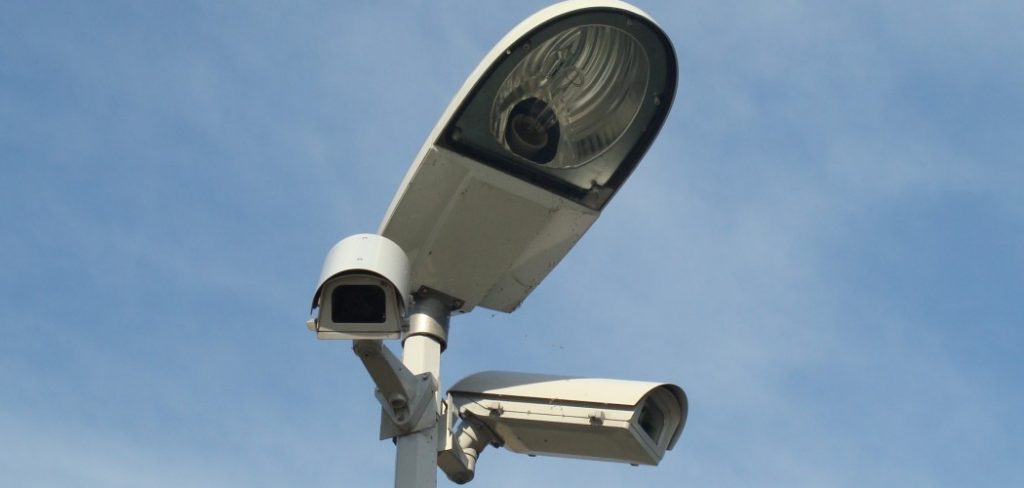
The main advantage of installing a light bulb security camera is that it provides an inconspicuous and discreet way to monitor your surroundings. Unlike traditional security cameras, which are often large and obvious, a light bulb camera can easily blend in with its surroundings and not draw attention to itself. In this blog post, You will learn in detail how to install a light bulb security camera.
Step by Step Processes for How to Install a Light Bulb Security Camera
Step 1: Inspect the Light Bulb Security Camera
Before jumping into the installation process, it is important to carefully inspect the light bulb security camera. Make sure all necessary components are included and there are no damages or defects.
Step 2: Turn Off Power Supply
For safety purposes, turn off the power supply to the light fixture where you will be installing the light bulb security camera. This will prevent any potential electrical accidents. Carefully remove the existing light bulb from the fixture and set it aside. Make sure the power supply is still turned off before proceeding.
Step 3: Screw in the Light Bulb Camera
Screw the light bulb camera into the light fixture just like a regular light bulb. Make sure it is securely in place. Follow the manufacturer’s instructions to connect the light bulb camera to your home’s Wi-Fi network. This will allow you to access and control the camera through your smartphone or computer.
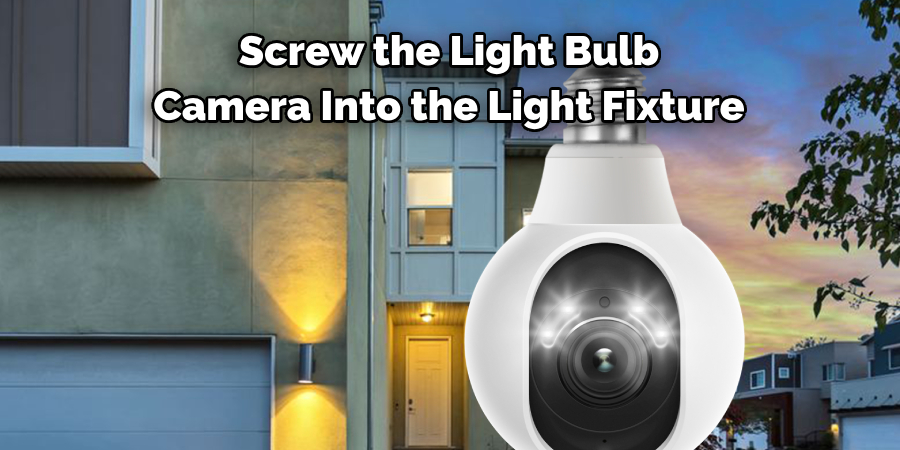
Step 4: Install the App
Install the corresponding app for your light bulb camera onto your smartphone or tablet. This will allow you to view live footage and adjust camera settings. Once the app is installed, use it to adjust the angle of the light bulb camera. Make sure it is facing the desired area for surveillance.
Step 5: Turn On Power
Turn on the power supply to the light fixture and test out the camera by switching it on through the app. Make any necessary adjustments to optimize the camera’s angle or settings. Through the app, you can also set up motion detection and receive alerts when movement is detected within the camera’s view.
Lastly, test out the camera by walking around its view to ensure proper motion detection and footage recording. Monitor the camera regularly to ensure its functionality and make any necessary adjustments.
Additional Benefits of a Light Bulb Security Camera
Apart from providing inconspicuous surveillance, a light bulb security camera also has other advantages.
- Easy and Cost-effective Installation: As seen in the step-by-step process above, installing a light bulb security camera is relatively easy and can be done without professional help. This saves both time and money compared to traditional security camera installation processes.
- Dual Functionality: A light bulb security camera not only provides surveillance, but it also serves as a regular light source. This adds convenience and practicality to the device.
- Remote Access: With the corresponding app, users can access the camera’s footage from anywhere with an internet connection. This allows for remote monitoring and peace of mind while away from home.
- Night Vision: Most light bulb security cameras come equipped with night vision, allowing for clear footage even in low light conditions.
- Motion Detection and Alerts: As mentioned earlier, the ability to set up motion detection and receive alerts adds an extra layer of security for your home or property.
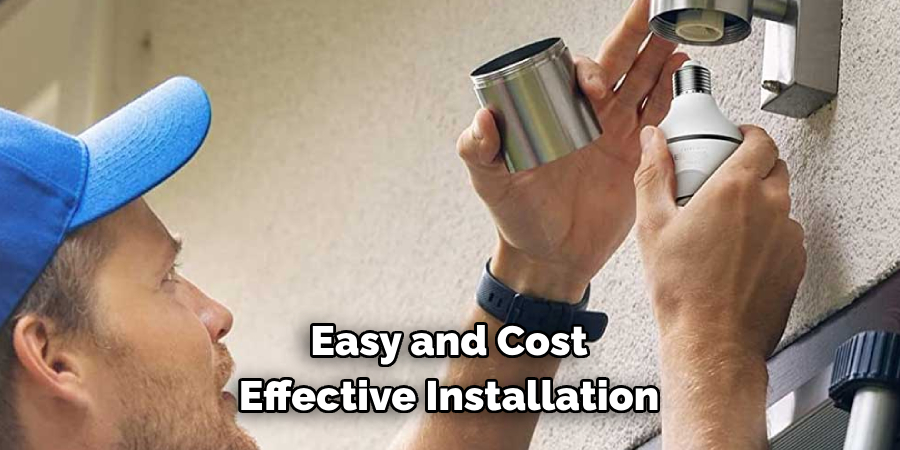
With the step-by-step guide provided and additional benefits outlined, it is a cost-effective and convenient option for enhancing your security measures.
Precautions for How to Install a Light Bulb Security Camera
- This will prevent any tampering or damage to the camera by potential intruders. Make sure to use a sturdy and secure light fixture to mount the camera on.
- When choosing a light bulb security camera, make sure it is designed to withstand outdoor elements such as rain, snow, and extreme temperatures.
- To prevent unauthorized access to your footage, make sure to set up a secure password for the camera’s wifi connection. This will also help protect your home network from potential hacking attempts.
- It is important to regularly change the password for your camera’s wifi connection, just like you would for any other wifi-enabled device. This will add an extra layer of security and prevent anyone from accessing your footage without authorization.
- Over time, the lens of your light bulb security camera can get dirty or dusty, affecting its image quality. Make sure to regularly clean the lens with a soft cloth to ensure clear footage.
- Before installing the camera, make sure to read the instruction manual and familiarize yourself with all of its features. This will help you get the most out of your camera and ensure it is functioning properly.
- Regularly check your camera’s footage to make sure it is working properly. If you notice any technical issues or malfunctions, contact the manufacturer for assistance.
By following these safety tips and precautions, you can ensure a successful and secure installation of your light bulb security camera. Remember to always prioritize your safety and the security of your home when choosing and setting up any type of surveillance system.
Hiring a Professional vs. DIY Installation
When it comes to installing new appliances or making upgrades to your home, one of the biggest decisions you’ll have to make is whether to hire a professional or do it yourself (DIY). While there are certainly benefits to both options, it’s important to carefully consider your specific situation and needs before making a decision.
Benefits of Hiring a Professional
There are several advantages to hiring a professional for installation tasks:
- Expertise: Professional installers have the necessary knowledge and experience to complete the job efficiently and effectively.
- Safety: Some installations, such as electrical or plumbing work, can be dangerous if not done correctly. Professionals have the training and tools to ensure safety.
- Time-saving: Hiring a professional can save you time and stress. They will typically complete the job much faster than an amateur, leaving you with more free time to focus on other tasks.
- Warranty: Many professionals offer warranties or guarantees for their work, giving you peace of mind that any issues will be taken care of.
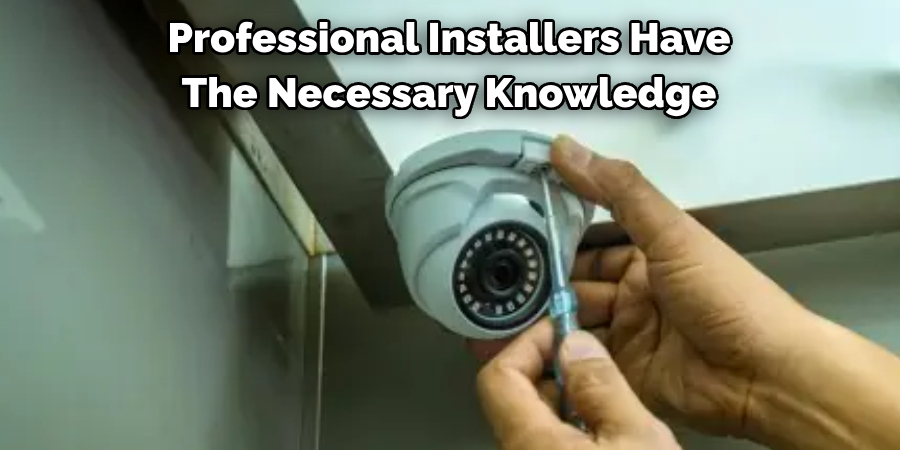
Benefits of DIY Installation
Of course, there are also benefits to doing the installation yourself:
- Cost-saving: DIY projects can be significantly cheaper than hiring a professional. You won’t have to pay for labor costs, and you may be able to find materials at a lower price.
- Satisfaction: Successfully completing a DIY project can give you a sense of accomplishment and pride in your own abilities.
- Flexibility: When doing the installation yourself, you have more control over the timeline and can work at your own pace.
- Learning: DIY projects can be a great opportunity to learn new skills and gain knowledge that may come in handy for future projects.
By carefully weighing the benefits and drawbacks of each option, you can make an informed decision on whether to hire a professional or do the installation yourself. In some cases, it may be best to combine both approaches – hiring a professional for more complex tasks and tackling simpler projects yourself.
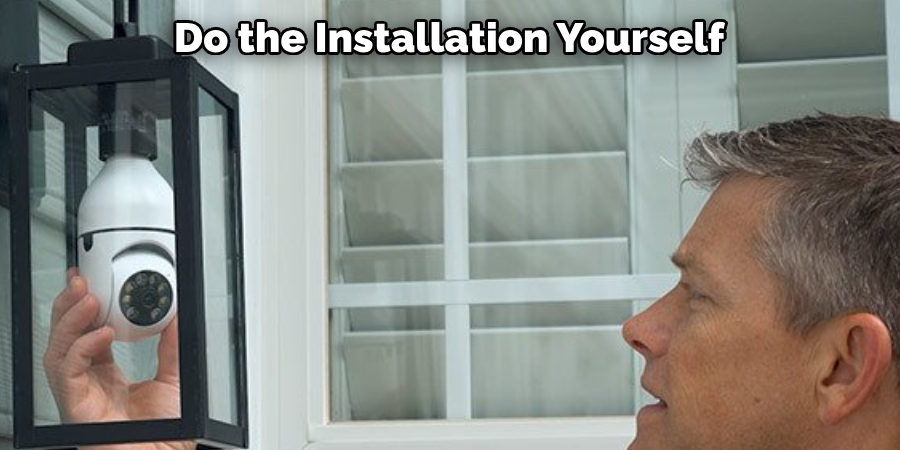
Conclusion
In conclusion, technology has greatly improved our lives and given us different ways to keep our homes safe. The installation of a light bulb security camera is one such example. It not only provides lighting for your home, but also acts as a surveillance camera to monitor any suspicious activity.
One of the biggest advantages of this type of security camera is its easy installation process. With just a few simple steps, you can have your camera up and running in no time. You don’t need any technical knowledge or tools to install it, making it a convenient option for any homeowner. I hope this article has been beneficial for learning how to install a light bulb security camera. Make Sure the precautionary measures are followed chronologically.
About
Safety Fic is a distinguished figure in the world of Diy design, with a decade of expertise creating innovative and sustainable Diy solutions. His professional focus lies in merging traditional craftsmanship with modern manufacturing techniques, fostering designs that are both practical and environmentally conscious. As the author of diy, Safety Fic delves into the art and science of Safety Fic-making, inspiring artisans and industry professionals alike.
Education RMIT University
(Melbourne, Australia) Associate Degree in Design (Safety Fic) Focus on sustainable design, industry-driven projects, and practical craftsmanship. Gained hands-on experience with traditional and digital manufacturing tools, such as CAD and CNC software.
Nottingham Trent University
(United Kingdom) Bachelor’s in diyfastly.com and Product Design (Honors) Specialized in product design with a focus on blending creativity with production techniques. Participated in industry projects, working with companies like John Lewis and Vitsoe to gain real-world insights.
Publications and Impact
In diy, Safety Fic his insights on indoor design processes, materials, and strategies for efficient production. His writing bridges the gap between artisan knowledge and modern industry needs, making it a must-read for both budding designers and seasoned professionals.
